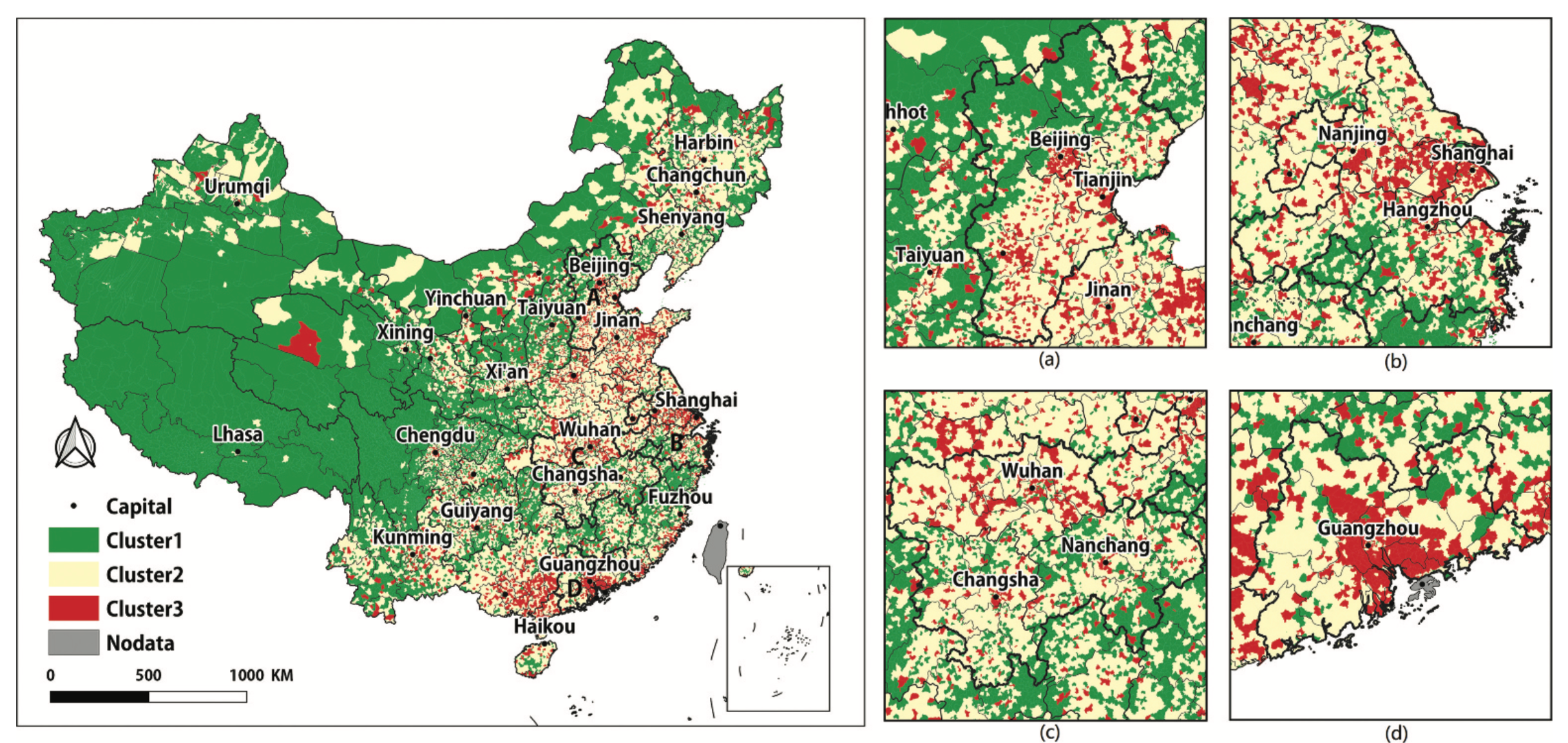Title:Understanding China’s urban functional patterns at the county scale by using time-series social media data

Abstract
Understanding urban functions help with government planning and resource allocation to promote economic development. Few studies have reflected the influence of population movement and migration on urban functions overtime on a large scale. This study adopted the time-series social media data and points of interest to analyse urban functions’ distribution at the county scale. By employing dynamic time warping distance and K-Medoids to cluster cities, the result of China’s hourly population distribution over different periods achieves a high accuracy (Pearson’s R = 0.821, R2 = 0.668). From the clustering results, time-series population data effectively reflect cities’ socioeconomic characteristics and identify the spatial distribution of China’s urban functional patterns. We select four representative urban agglomerations to deeply analyse their urban function patterns. Furthermore, urban functions can also influence changes in time-series populations. This study explores the correlations between time-series population mobility and urban functions, which could help analyse urban functions and urban socioeconomic conditions.
Keywords
Urban function; social media data; population mobility; dynamic time warping; K-Medoids
Full Text Download
Q.E.D.









